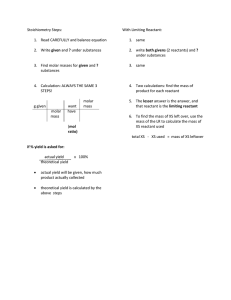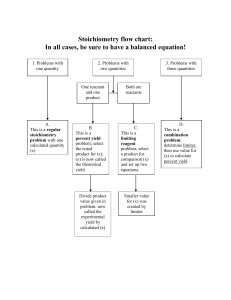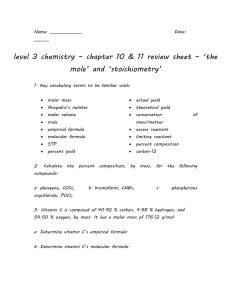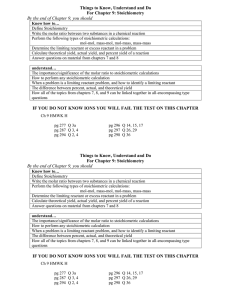Stoichiometry Study Guide - Honors Chemistry
advertisement
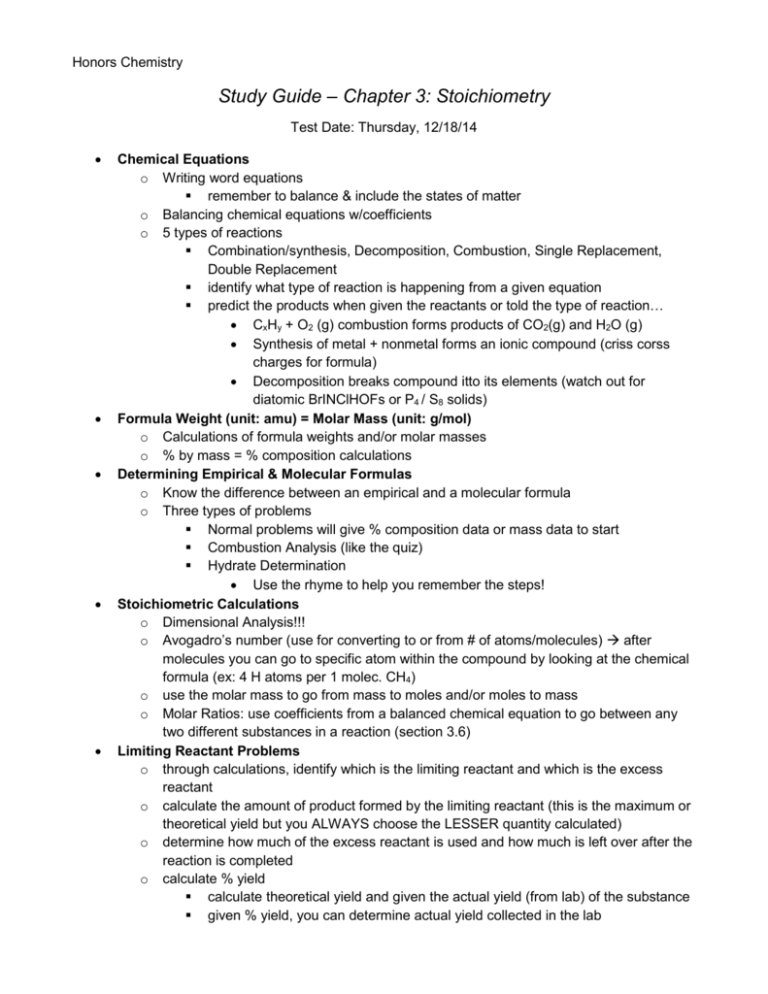
Honors Chemistry Study Guide – Chapter 3: Stoichiometry Test Date: Thursday, 12/18/14 Chemical Equations o Writing word equations remember to balance & include the states of matter o Balancing chemical equations w/coefficients o 5 types of reactions Combination/synthesis, Decomposition, Combustion, Single Replacement, Double Replacement identify what type of reaction is happening from a given equation predict the products when given the reactants or told the type of reaction… CxHy + O2 (g) combustion forms products of CO2(g) and H2O (g) Synthesis of metal + nonmetal forms an ionic compound (criss corss charges for formula) Decomposition breaks compound itto its elements (watch out for diatomic BrINClHOFs or P4 / S8 solids) Formula Weight (unit: amu) = Molar Mass (unit: g/mol) o Calculations of formula weights and/or molar masses o % by mass = % composition calculations Determining Empirical & Molecular Formulas o Know the difference between an empirical and a molecular formula o Three types of problems Normal problems will give % composition data or mass data to start Combustion Analysis (like the quiz) Hydrate Determination Use the rhyme to help you remember the steps! Stoichiometric Calculations o Dimensional Analysis!!! o Avogadro’s number (use for converting to or from # of atoms/molecules) after molecules you can go to specific atom within the compound by looking at the chemical formula (ex: 4 H atoms per 1 molec. CH4) o use the molar mass to go from mass to moles and/or moles to mass o Molar Ratios: use coefficients from a balanced chemical equation to go between any two different substances in a reaction (section 3.6) Limiting Reactant Problems o through calculations, identify which is the limiting reactant and which is the excess reactant o calculate the amount of product formed by the limiting reactant (this is the maximum or theoretical yield but you ALWAYS choose the LESSER quantity calculated) o determine how much of the excess reactant is used and how much is left over after the reaction is completed o calculate % yield calculate theoretical yield and given the actual yield (from lab) of the substance given % yield, you can determine actual yield collected in the lab
